Editorial note:
- This is a working draft, open to feedback and iteration. If you have thoughtful, non-rant-y (!) feedback, please let me know. I'd appreciate your advice on making this better.
- This is fairly in-depth for a how-to guide (though I included a TL; DR section). But I hope you find it helpful. For a quick overview, just read (1) the bright orange boxes spread throughout the article or (2) jump all the way to the bottom of the post for my ultimate recommendation and a quick, visual summary of the entire guide.
TL; DR
Defining maturity models in innovation is set up to fail
Unfortunately, creating workable maturity models for Innovation work is harder than it seems at first.
Yes, I'm sure being a ray of sunshine to start here. But hear me out. We will get to something you can use. I promise. We just also must be open-eyed about the challenge that we face in such a simple-seeming topic, too.
Some of the problems:
- DEFINITION PROBLEM: How can we agree on maturity models if we can't even agree on what "Innovation" is?
- SCOPE PROBLEM: How can we contain the effort of maturity model creation when "maturity" can encompass a range of topics?
- TYRANNY OF CHOICE PROBLEM: How can we pick any one maturity model when there is such a dizzying variety from which to choose?
- EXPERTISE PROBLEM: How can we develop high-quality maturity models when the experts in doing so often don't work in Innovation?
We have a range of existing maturity models
Despite the difficulties, people like to categorize stuff. Same thing here as in other disciplines. And so, you might build your own maturity model atop a variety of starting points.
Those existing. models include:
- MODELS BY INSIGHTS COMPANIES: E.g., Gartner's "At-a-Glance Management Maturity Model" (from 2011. No, it's not innovation-specific, but it gets discussed in this context, so it's good to know about)
- MODELS BY SOFTWARE COMPANIES: E.g., Viima's Innovation Maturity Matrix
- MODELS BY FOUNDATIONS: E.g., the one by the Total Innovation Management (TIM) Foundation
- MODELS BY CONSULTANCIES: E.g., Deloitte's Digital Innovation Maturity Model (from 2018)
A better approach than any of these models takes effort
Let's be real. "Innovation maturity models" represent a really nerdy topic. If you really consider it worth your while, you probably know why you are doing so. But still, it's worth your while to capture your (1) purpose, (2) process, and (3) outcome/ success standards. It will ensure that you don't get lost in the weeds and that your work will serve a true "Must-Do Purpose."
Luckily, you have guides available for all three of these aspects–Purpose, process, and outcome standards. Read on for all of them. In short:
- PURPOSE: I give you ways to research, summarize, and visualize your purpose.
- PROCESS: I share a rigorous 7-step process set out by experts in this field for doing this work well.
- SUCCESS STANDARDS: There actually do exist "best method" standards for assessing the maturity of your innovation work. I share them too. (As an utter geek on this topic, I particularly like these success standards.)
If this approach seems either too over-cranked or too simple, I even offer you simpler and fancier options.
Just to end things happily after all that nerdery, we end on a fun little bonus insight.
May you do (and, with the help of your shiny new framework, also know) the most mature and awesome innovation craft ever!
The problems that make it hard to choose a maturity model for corporate innovation
I called out four common problems above: The "Definition" problem, "Scope" problem, "Tyranny of Choice" problem, and "Expertise" problem. There may be even more. But these are already rather annoying. Let's not make it worse. Instead, let's look at each of these issues in turn (no particular order):
DEFINITION PROBLEM: How can we agree on maturity models if we can't even agree on what "Innovation" is?
It would be nice to know that your innovation work is any good. It'd be even nicer to know how to get better!
But sadly, we Innovation practitioners can't even agree on how to do our craft. Instead, we divide by faction and orthodoxy. A single authoritative standard for good work, if we ever get one, still lies in the future. We haven't reached such a point of easy standardization yet. It's not even "adjacent possible" yet.
SCOPE PROBLEM: How can we contain the effort of maturity model creation when "maturity" can encompass a range of topics?
It might be tempting to think of maturity models to mean capability maturity models.
But unfortunately, a mature innovation program requires much, much more than just strong capabilities. To put it crudely, highly capable people can still produce crap results (and do so on a range of topics in Innovation and far beyond).
Will you also include assessments of your culture, strategy, portfolio creation, or even more? All of those topics are plausible and helpful. But the more topics you add, the more you boil the ocean.
TYRANNY OF CHOICE PROBLEM: How can we pick any one maturity model when there is such a dizzying variety from which to choose?
Many pundits know that too. And so, as a substitute for universal maturity standards, they'd all too happily tell you their own standards for defining good work. The list of available maturity models is long. Search the online world for "innovation maturity model," and you'll find so many of them that you'd struggle even to find and assess each one.
How are you supposed to pick among them without drowning in models?
EXPERTISE PROBLEM: How can we develop high-quality maturity models when the experts in doing so often don't work in Innovation?
I have worked alongside teams whose full-time job it was to describe, assess, and improve organizational maturity–in other words alongside experts in this kind of thing.
Most of them did not work in or near Innovation teams.
A few work in academia.
More of them tend to work in Human Resources (HR), coming at it from a human capability perspective, in Strategy, coming at it from a core competencies perspective, or in Engineering, coming at it from a systems engineering perspective. They built entire corporate-wide capability models, conducted sophisticated competitive research and simulations, and enabled systems designs capable of helping rocket scientists. Impressive work all around. But not typically located in Innovation teams.
Yes, once in a while, "Innovation Operations" teams also come about and attempt to define success comprehensively for an organization's Innovation function. But for whatever reasons, I have not seen the peopled by dedicated capabilities professionals, nor have I sadly seen them have the long-term impact to which they aspired.
That probably just reflects my very limited perspective. But it does bear out to some degree: Capability and maturity work is by its nature very meticulous, detailed, and optimization-focused. I hope you'll forgive me if I claim that many Innovation teams would not consider those qualities among their core culture and competencies.
And yet, we have tons of maturity models available to us
Despite all these problems, people have enthusiastically created a whole host of maturity models.
Let's have a look at some of the options, keeping in mind the challenges we just discussed, so you can gauge for yourself whether the different models manage to overcome them.
Unfortunately, there are too many models to cover exhaustively here. But it's at least worth a general survey for initial orientation.
Overview of available innovation maturity models
The organizations that offer maturity models range from insights companies to software companies, consultancies, and even foundations. If that's not enough yet, you can even contribute to capability models yourself.
Who are all these firms? (Note, this survey is just for illustration's sake. Do not infer that I particularly do or don't endorse any of these models, unless explicitly noted*.)
Sample models by Insights companies
Among Insights companies e.g., consider Gartner's version from 2011 (overview here. This tool is common enough that it still comes up in the academic evaluation of such models).
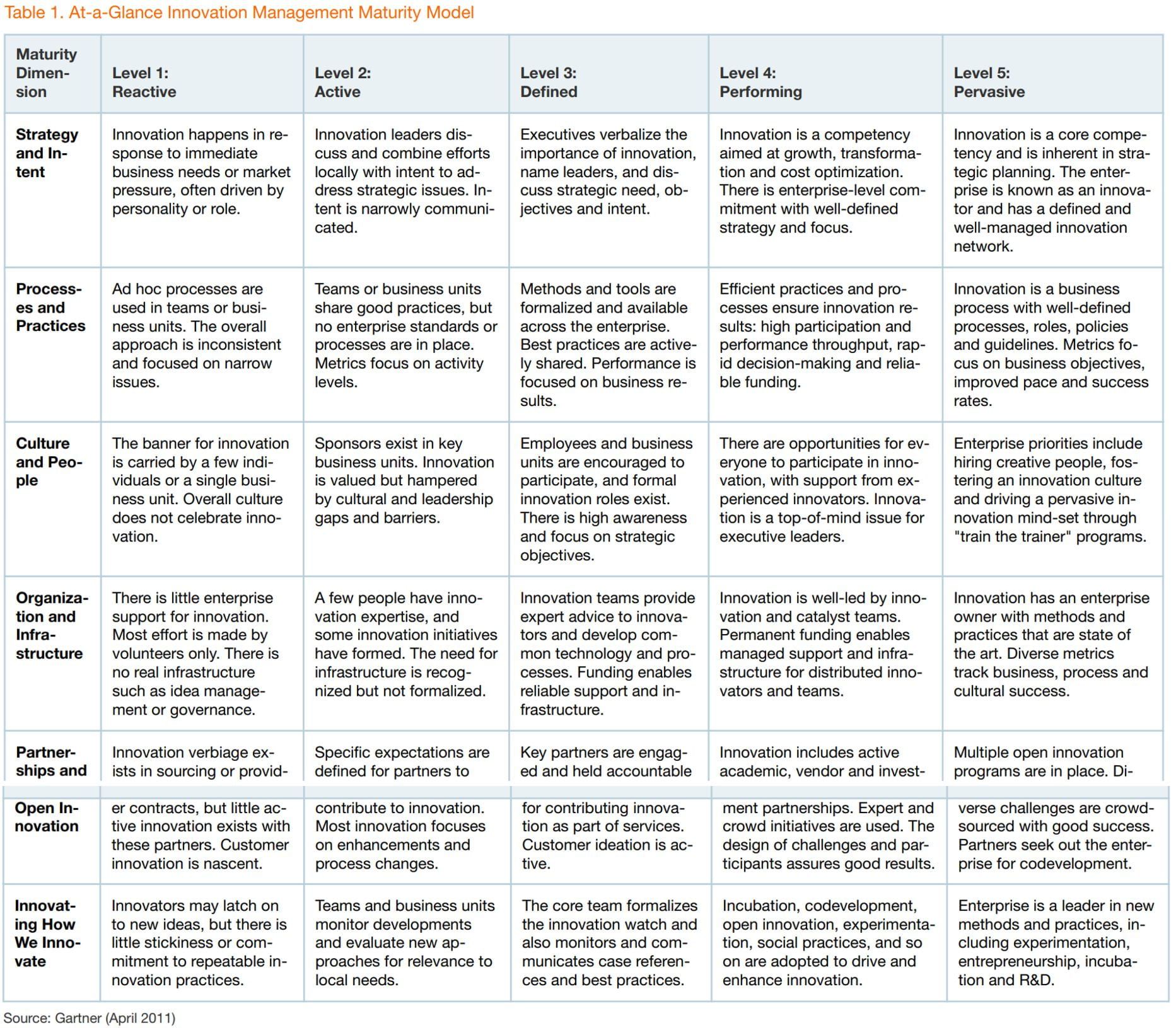
Sample models by software companies
Some software companies offer their own capability and maturity models. Viima, for example, focuses on a simple 2x2 Innovation Maturity Matrix.
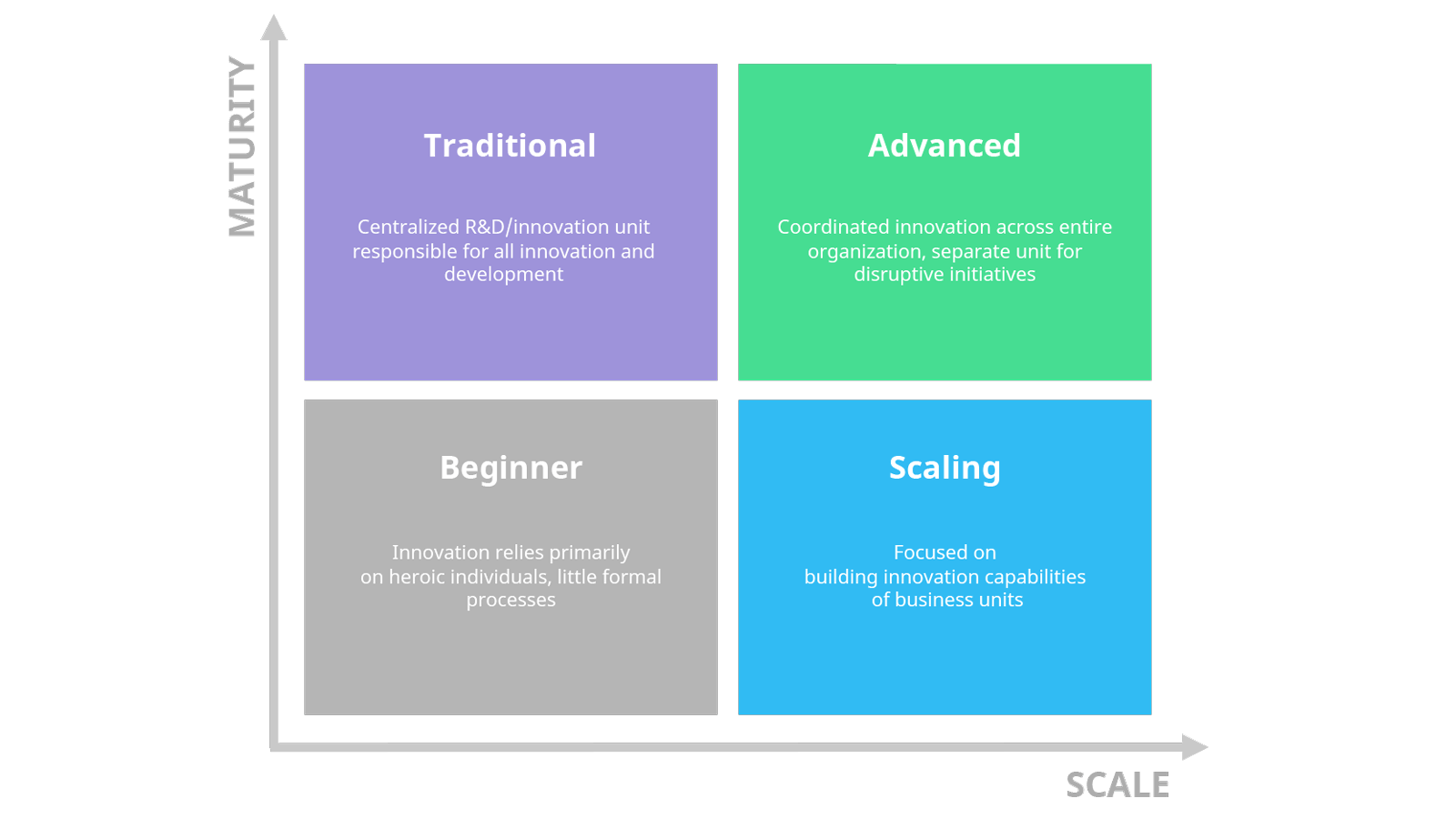
Others bring in partners (sometimes even multiple levels of partners) for credibility and advocate for those partners' approaches.
For example, edison365, highlights a more detailed, quantitative maturity model created by consultant and author Braden Kelley, who offers both free and paid versions of the full model. He, in turn, adapted his model from the book Innovation Tournaments by Christian Terwiesch and Karl Ulrich (more here).
Sample models by foundations
Even entire organizations have been created for the purpose of assessing and advancing innovation maturity and for connecting organizations that want to do so. The Total Innovation Management (TIM) Foundation, for example, comes to mind. They, like Gartner, use a five-stage maturity model:
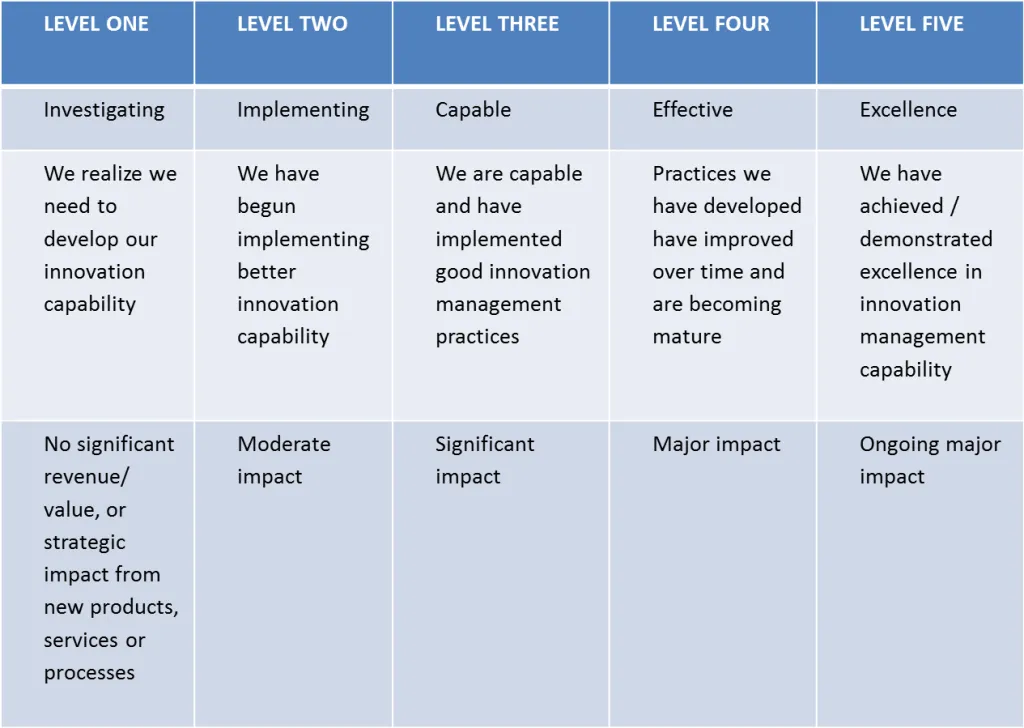
Sample models by consultancies
And all that's just considering "generic" maturity models.
Start to consider specific innovation topics in more detail, and you'll find even more nuanced models, tailored to consulting firms' individual specialties, like Deloitte's model (2018) on digital innovation maturity.
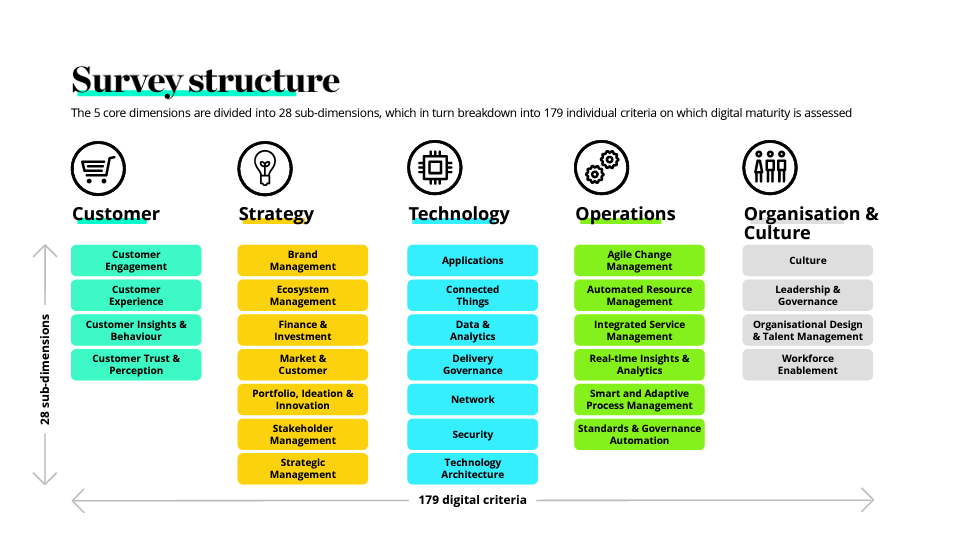
Sample models to which you can contribute
But that's not all yet either, it appears. If you want, you, too, can now contribute to a "collaborative article" on LinkedIn about ways to "manage the risks and uncertainties of innovation projects at different maturity levels."
If you're ready to pick a model, at minimum please pressure-test it!
So, there you have a sense of the breadth of models and of organizations that offer them.
One of these (or some other) models may resonate with you and your needs. But even if you are tempted just to pick one, please do yourself the favor of at least investigating whether the model is actually as good as its authors obviously make it out to be!
In other words, pressure-test the models that you consider!
Checking the quality of your models doesn't have to be a daunting task. For example, you can start by simply conducting two checks; (a) whether the model you are considering has been superseded by a new iteration or variation, and (b) whether the model is based on solid research or mostly made up.
For a starting point and examples of these two tests, you can look to academic research: We now have so many maturity models that they have come to the attention of academic researchers, who have conducted meta-research into some of them. Their work doesn't absolve you of doing your own due diligence. But it can serve as a solid starting point.
Some, like Magnus Karlsson and Mats Magnusson (2019), take a chronological approach to mapping the evolution of innovation maturity models.
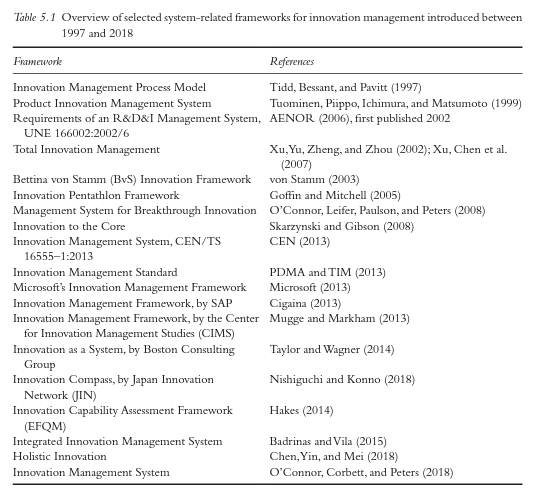
Others, like Prof. Adbelkader Achi et al (2017), can help you to gauge how (and how rigorously) some of the models out there are validated, so they actually mean anything:
![A table showing "types of validation for the [7 innovation maturity] models"](https://credibleinnovation.com/content/images/2023/07/Types-of-validation-for-innovation-maturity-models.-Achi-et-al..png)
My take: All these models share common problems
Which returns us to the starting question. How to pick among all the options?
Even if you manage to pick a model you like, you may still run headlong into two major challenges from stakeholders:
- Why should we believe any of what this model claims?
- Why does that model apply here, in our specific organization?
Most of the models introduced above make it exceedingly difficult to answer these questions. You basically have to "trust the experts." Some models provide no support for why they are any good at all. And others may make sense somewhere but still remain open to "not invented here" challenges. You'll have an uphill battle for proving that the models make sense for your organization, which–surely–is a special snowflake unlike any other.
Of course, the opposite problem also applies: If you create your own model and can't prove that the model you suggest came from a 3rd-party "authority," your stakeholders may only trust your suggestions to the degree they (and their bosses and stakeholders) trust you. So they may also push back on your proposal even if you create your own approach.
One way or the other, I have seen too many stakeholder challenges scuttle perfectly plausible 3rd-party models.
And even if that were not enough, some maturity models differ so much from each other that it is nearly impossible to compare them and rationally declare one "better suited" for your needs than others. (E.g., good luck comparing the Gartner and Viima models above, or either of them with the Wheel of Innovation still to come below.)
Let them inform your thinking. Borrow from them what helps you. But don't fully rely on any of them, particularly if you will have to defend your choice to skeptical stakeholders.
All that leaves you in a pickle: You need something "custom to our needs" that is simultaneously a "best method."
Ideally, create a "custom" model measured against "best method" standards
Luckily, you can create models that are both "custom" and "best method."
It takes way more effort than either working with an off-the-shelf model or a completely custom one. That's for sure. But you're also more likely to earn stakeholder buy-in.
1. PURPOSE: Define success for your innovation maturity model
2. PROCESS: Use a "best method" process for creating your custom innovation maturity model
3. OUTCOMES: Test your custom model against rigorous, simple standards
1. PURPOSE: Define success for your innovation maturity model
The general value of defining success
Foundational science is great, flexible work. But it's not terribly applied. Similarly here, abstract success definitions are great and flexible. But they won't get you terribly close to the outcomes for which you are likely getting paid.
As a quick caveat, I am a strategist by style. So naturally I obsess about "success," what it means in your context, and why that definition of success is at all useful. Equally naturally, you might discount my ramblings on this topic. But give the point a short moment's consideration anyway:
You probably aren't creating a maturity model for the sheer fun of it. You are trying to achieve something very specific. And if you do, then you'll want to do everything in your power to succeed at it. One way of increasing your chances of success is by building common understanding with your team and stakeholders on what constitutes success (i.e., standards) and how you'd recognize that success (i.e., qualitative or quantitative metrics).
Said the other way round, if you don't bother to define success, you're not that likely to achieve it.
The importance of defining success in maturity models
Why harp on all this theory?
First, because this topics of "maturity models" is absurdly geeky. If you bother to do this at all, make sure you do it wall.
As already hinted at, your best guess for doing it well is to ensure that your work is a true "must-do."
I have created a "Must-Do Canvas" to help you capture that must-do purpose in writing. Read on there for specifics.
Once you have confirmed that you must go down this path, you are basically committed to success, no matter how hard it is. That commitment will go a long way toward ensuring that you do your best work.
And second, this theory matters because defining success in maturity models is actually devilishly hard.
Some of the more generic maturity models, e.g., the one by Gartner above, are open-ended. They only set general success standards by defining capability levels that amount to a range from "you suck at this" to "you're awesome at this." Such gauges make for interesting information. And they are exceedingly flexible for use in many applications. But by contrast, they are not terribly specific. You still need to draw your own insights. And those require significant interpretation and, inevitably, debate.
E.g., even if you and your stakeholders agree that you're "Level 5 Awesome" at some capability, say "building empathy with users & experts," this tells you nothing about next steps: Should you push ahead to some "Level 6," where you'll become world class empaths? Should you back off because "Level 5" is more competence than you need, simply causing you to have to pay expensive subject experts whose expertise you don't use? How long will your expertise last? And on and on.
As much as generic success standards are universally usable, they are not terribly actionable.
Examples of specific success definitions in maturity models
One great example of more specific success definitions comes from Innovation 360. We will talk about them more in a bit. But for now, compare these success standards to the more generic ones offered by Gartner.

Both Gartner and Innovation 360 use a five-point scale for capability levels. Where Gartner uses success categories like "processes and practices," Innovation 360 rolls up their categories to more "insight-like" or "headline-like" terms like "systems approach," which is a specific kind of processes and practices. Ditto innovation-specific topics like "managing uncertainty," which doesn't have any equivalent among Gartner's categories.
To be clear, Innovation 360 still uses some generic terms like "culture" and "strategic direction," only defining them in subtitles, which Gartner does too. But they have certainly added one level of specificity.
That said, you can get even more targeted. For example, consider part of the maturity model that I use for gauging the degree to which Innovation teams achieve Credible Innovation, the innovation method I have found to be critical for ongoing success, and that forms the core of my advisory work and upcoming book.
Such specificity isn't always needed. But for Credible Innovation, it was worth it to create a "monkey bar-like" sequence of nested success measures that build up into each other. That's because I needed to allow readers to be self-sufficient by making it dead-simple for them to diagnose their own team's Credibility.
As a reminder the point is not so much to discuss the nuances of Credible Innovation here. Instead, the point is just to illustrate that you can be quite specific in the way you define success.
For example, one way to become "Credible" is to pursue a "Must-do Purpose" in your work. To be "Must-Do," a purpose must in turn be "Critical," "Urgent," and "Set Up For Success."
From those standards, you can find specific metrics that make a team's purpose achieve these standards. E.g., here's one qualitative way in which I currently gauge a team's "Criticality:"

And finally, for each standard, you can define maturity levels, even in nuanced ways:
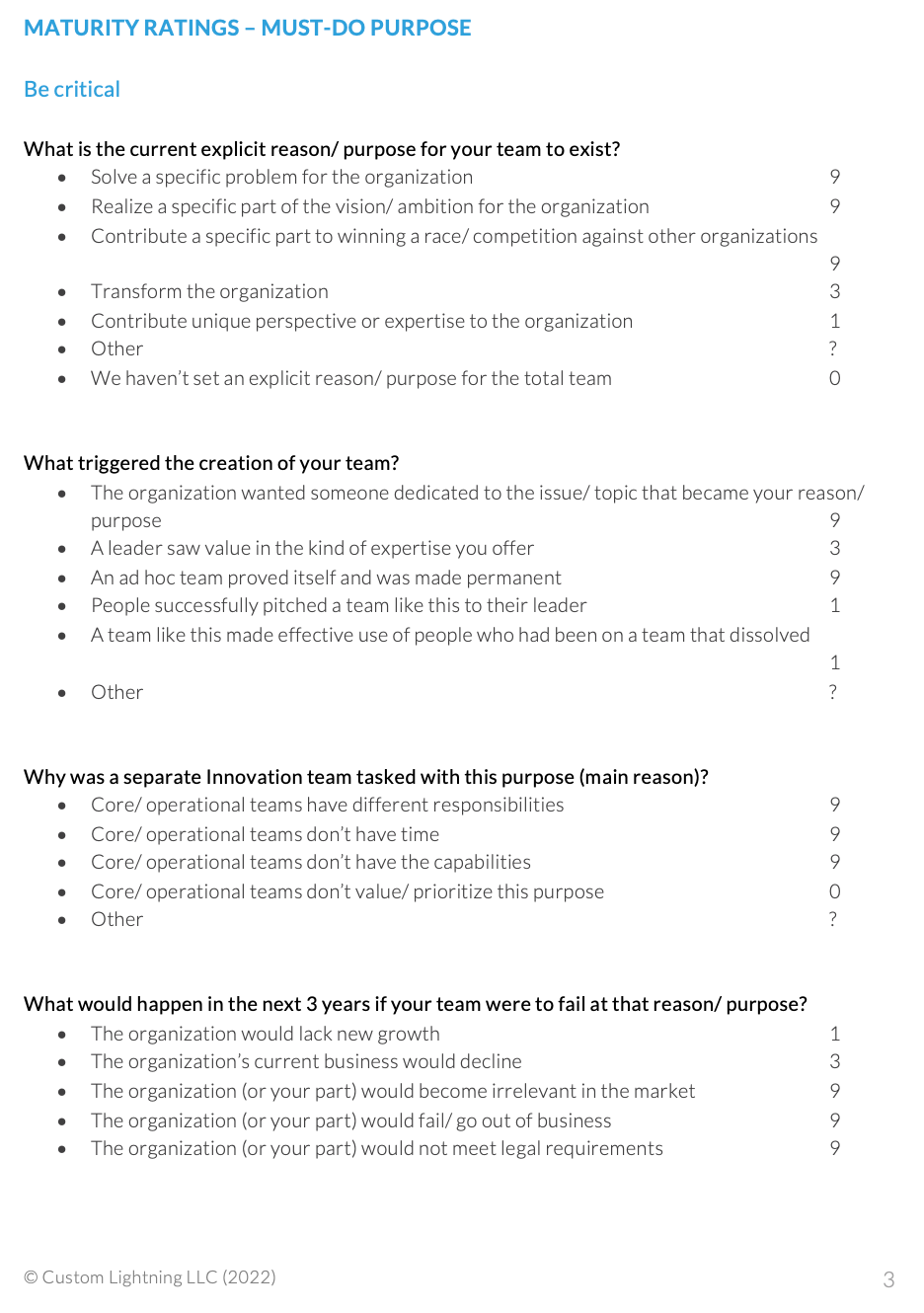
Just to zoom back out from this particular example, let's recall the point of this deep-dive:
It is both possible and helpful to describe success in specific ways that will lead people to the outcomes you want, not just in generic "good vs. bad" ways that make for excellent foundational work but take significant work to apply to specific situations.
2. PROCESS: Use a "best method" process for creating your custom innovation maturity model
Swedish researchers Anders Richtnér et al (2017) took an empowering approach to creating best methods.
Instead of "giving you fish (i.e., a single maturity model), they teach you how to fish (i.e., give you a process for creating good maturity models)."
In the MIT Sloan Review, Richtnér et al laid out an approach for creating your own innovation maturity model and accompanied their article with a helpful compact graphical summary. The benefit of their approach is that you can claim to your stakeholders that you "didn't just come up with some random model." Instead, you followed a "robust" process that have passed both academic rigor and MIT's publishing standards. You offer rigor! Discipline! Risk mitigation! (Add your own corporate speak word as desired.) Bonus: Richtnér et al's article even calls out three common traps to avoid along the way.
As far as processes go, that's maybe still not ironclad. Naysayers will find nits to pick. But it's pretty good.

A few aspects of their framework particularly matter to call out:
In "Phase A," their Step (1) is for you to find other innovation measurement practices. In effect, that's what we've done at the beginning of this post. And you can certainly find and evaluate more examples. In other words, it's not bad to seek out existing examples. You just shouldn't rely on them to work for you straight-up. Finding existing models is merely the first step in Richtnér et al's seven-step model.
Step (2) echoes my point above that success is unique to you and your needs. Don't accept a generic definition of success. It doesn't matter to be "amazing" at some skill that doesn't matter.
Finally, the steps in "Phase B" point out that innovation capabilities differ by level–for portfolios, processes (or innovation methods/ toolkits), and individual projects.
3. OUTCOMES: Test your custom model against rigorous, simple standards
As a source for standards that are both rigorous and simple (at least simple in a way), I suggest those developed by the ISO.
A quick intro to the ISO and their work on innovation
The ISO, the International Organization for Standardizations, is one of the gold standards for standardizing standards (couldn't resist ;) ). For decades now, it has published over 24,000 standards in a vast range of fields, ranging far beyond innovation. Even if you don't recognize their name, you still use products created to meet their standards every day.
Since 2019, one of their technical committees has been working on ISO 56000, their label for standards related to innovation management. Six related standards exist as of Summer 2023, covering topics as simple as innovation "fundamentals and vocabulary" and as nuanced as "tools and methods for strategic intelligence management."
Two caveats before we dive in any more:
- Note that reading ISO standards can be a bit ... dry. But that's by design. Their work is highly technical, requires precise writing, and is meant to set specific standards, just as is the case for laws. This is one occasion where it pays to stay engaged no matter what!
- It takes a lot of work to develop ISO standards. And so the ISO charges good money for accessing them. Amounts vary but tend to range between $100 and $200 for the documents about which we care. They do offer free previews with detailed tables of contents though. And even those tables of contents are worthwhile and can give you a sense for whether to buy the full standards.
Why ISO standards matter to you
Mainly, ISO standards matter because they are fairly-universally recognized, rigorous, and comprehensive: You will be hard-pressed to find a more obvious authority on any technical topic. Even stakeholders who might question you on your use of any other source should accept standards developed with the same rigor as those that keep people safe and alive around the world every day, by people with access to experts from around the world!
But there's another benefit to using their standards: They are simple! Specifically, they get rid of the dreaded maturity "levels" and replace them with simple "yes/ no" choices. Either you meet each listed standard, or you don't. No more agonizing whether your work is at some random "Level 2, "Level 3," or maybe more at some made up middle-ground resulting from awkward negotiations among teams and stakeholder, like "Level 2.879." You can still roll up individual standards by group if you want. But yes/ no choices form the core of the work. That in turn shifts conversations from arbitrary levels to the standards themselves.
The relevant ISO standards: ISO 56002 and ISO/ TR 56004
We care about two specific ISO standards:
ISO 56Use:2019 introduces the "innovation management system." As the ISO points out in the standard's free preview, this management system is
"a set of interrelated and interacting elements, aiming for the realization of value. It provides a common framework to develop and deploy innovation capabilities, evaluate performance, and achieve intended outcomes.
The elements can be gradually adopted to implement the system according to the particular context and circumstances of the organization. Full benefits can be gained when all the elements of the innovation management system, are adopted by the organization."
Sections 9 and 10, in particular, cover "performance evaluation" and "improvement," in other words, maturity models.
The ISO also warns that no capability model can create capabilities on its own:
"Ultimately, the effective implementation of the innovation management system relies on the commitment by top management and the ability of leaders to promote innovation capabilities and a culture supporting innovation activities."
That said, the ISO doesn't just demand that your leadership does all the work. Instead, they offer a second standard, ISO/TR 56004:2019, in which they include their guidance on ways to conduct a good "innovation management assessment." Only by regularly assessing the quality of your innovation management can you ensure that you continue to improve your standards over time:
"Managing innovation in a systematic manner creates value and secures the organization’s future. As a consequence, organizations seek guidance on continuously developing their innovation management capabilities and performance. A pre-requisite is transparency of the organization’s current performance of its IM. To achieve necessary transparency here, regular and effective assessments of the IM are essential."
A subtle point warrants calling out here: It's not the "assessment" by itself that does all the hard lifting–not factors that boil down to accountability, enforcement, power-based management. Instead, it's the combination of assessments with transparency and habits. And by the way, the ISO 56002 standards assess leadership too. So everyone involved is in the same boat. Transparency cuts all ways.
Again, even the free preview of the standard offers helpful initial guidance. In this case, I'd especially point you to the ISO's table of contents, specifically its "Principles of Innovation Management Assessments" section.
There, the ISO offers you the basic design principles on which a good maturity assessment rests:
Add value to the organization and interested parties
Challenge the organization's strategy and objectives
Motivate and mobilize for organizational development
Be timely and focused on the future
Allow for context and promote the adoption of best practice
Be flexible and holistic
[Create] an effective and reliable process
Using the ISO standards
The standards are long (and a bit dry). But luckily, they are also well-organized and clear. Essentially, they function like user needs in human-centered design or "jobs-to-be-done (JTBD)" in innovation strategy.
- Create a list of capability topics, either from scratch or using the ISO standards as a guide
- Pick each topic in turn
- Create maturity levels for that topic
- Find the relevant standards in the ISO documents
- Make sure that whatever standards you developed meet the ISO criteria, i.e., that you can "check off" all the relevant standards from the ISO document
Of course, we are all like Goldilocks and have our own standards for what we consider "just right." Here, then are ways to dial things down or dial them up, depending on your liking:
What if that just seems too much work?
Other firms and organizations have taken the ISO standards and made them a bit simpler to use.
If you just want a quick overview of the ISO standards, consider the short, visual introductions by Innovation Management System. (Check both the "latest articles" and "article archive").
For a more in-depth–but still accessible and visual–approach, consider Innovation 360. They offer free and paid innovation assessments based on the ISO approach, along with digestible overviews of a way you might summarize your ISO readiness assessment.

What if that seems not rigorous enough?
Innovation 360 also offers a ISO-compliant assessment tool and related services, essentially an audit, complete with periodic re-assessments, and based on "assessing over 5,000 organizations in 105 countries." Such audits give you another output, the "Wheel of Innovation," essentially another framework, which ties the topic of innovation capabilities to a broader set of topics, namely innovation strategies, leadership style, and culture. (A few more details, e.g., here.)
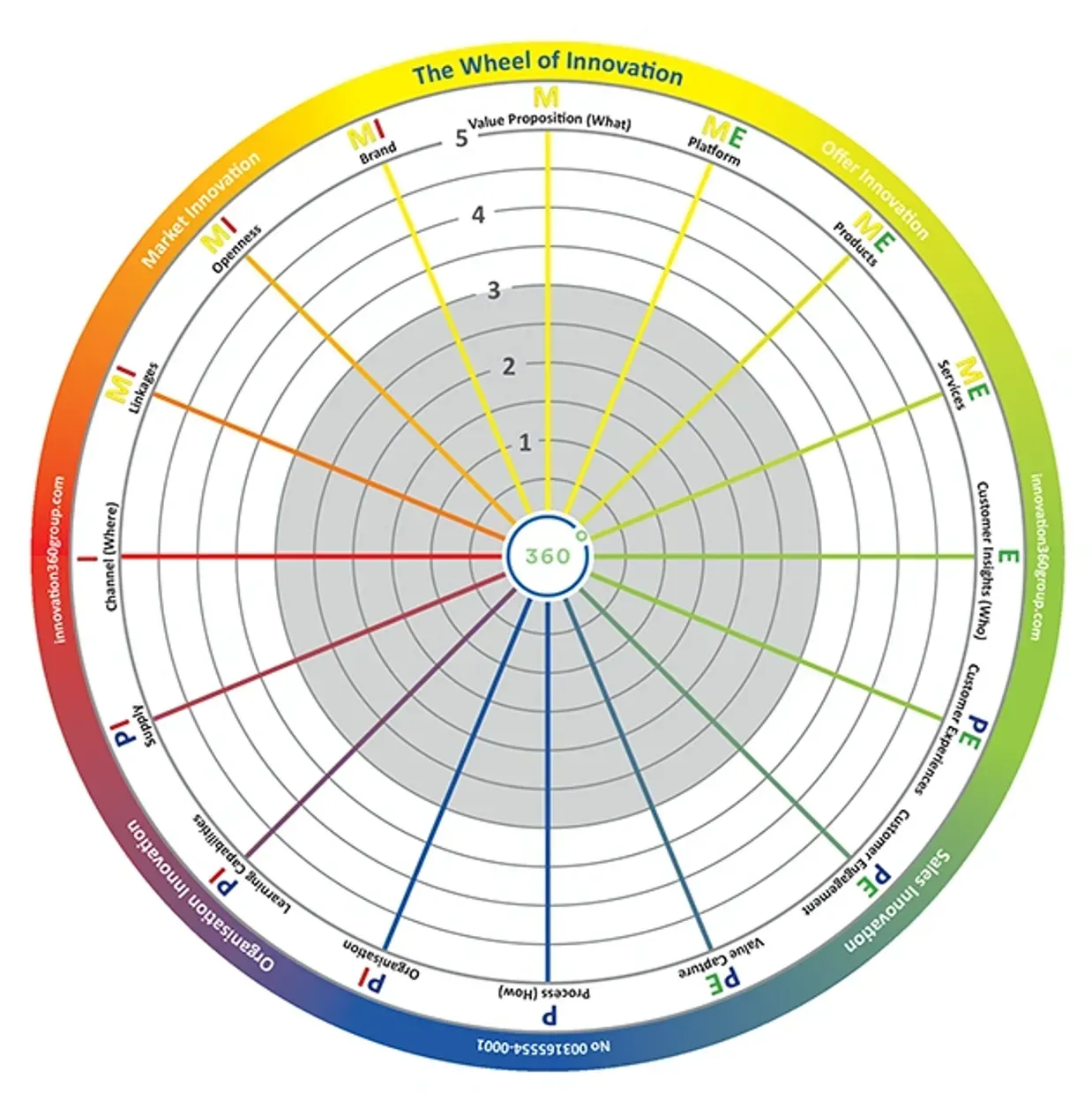
If you are self-sufficient, you can even pursue an "in-between" DIY path for creating your own "Wheel of Innovation," using Magnus Penker's book How to Assess and Measure Business Innovation (2017).
My actual recommendation: Match effort to value
In the end, the effort you put into work like this should match the benefits that you hope to gain.
That means that your approach should differ for a quick analysis, vs. a stand-alone effort, vs. a major effort:
For a stand-alone effort that warrants significant time investment, e.g., as the objective of its own project, use a tool that comes with pre-built assessments and more sophisticated analytical options, like Innovation 360's ISO 56000 readiness assessment or their Wheel of Innovation. As is the case for other complete methods like Google Venture's design sprints or the original Lean Startup methods, they require some reading, preparation, and trial and error. But they also pay off the effort with more nuanced outputs.
(To be fair to firms like Gartner, we saw that a more robust consulting project based on their model would also offer more detailed insights. The limitation isn't the framework. It's the ability to use it on a DIY basis just with the content that's easily and cheaply available in the public domain.)
For a major effort that will last, e.g., for a significant stand-alone project or as part of the full-time work of a Capabilities team, create a custom framework backed by the full ISO 56000 standard and including robust ongoing assessments. You will easily get the greatest value from such a model matched exactly to your needs. And the upfront "fixed cost" to create it will yield to much lower "variable" (upkeep) cost over time. But of course, the initial effort is still significant, unless you can connect it into other capabilities work that you are doing anyway.
Bonus content
During the research for this post, I discovered a little gem. Not technically related. But if bureaucracy is one big enemy of innovation, then a way to improve your innovation maturity is to reduce bureaucracy.
Gary Hamel and Michele Zanini (2017) have created a great self-assessment of your organization's level of bureaucracy, leading to a "Bureaucracy Mass Index (BMI)." They shared it with the Harvard Business Review here.
Summary of this guide
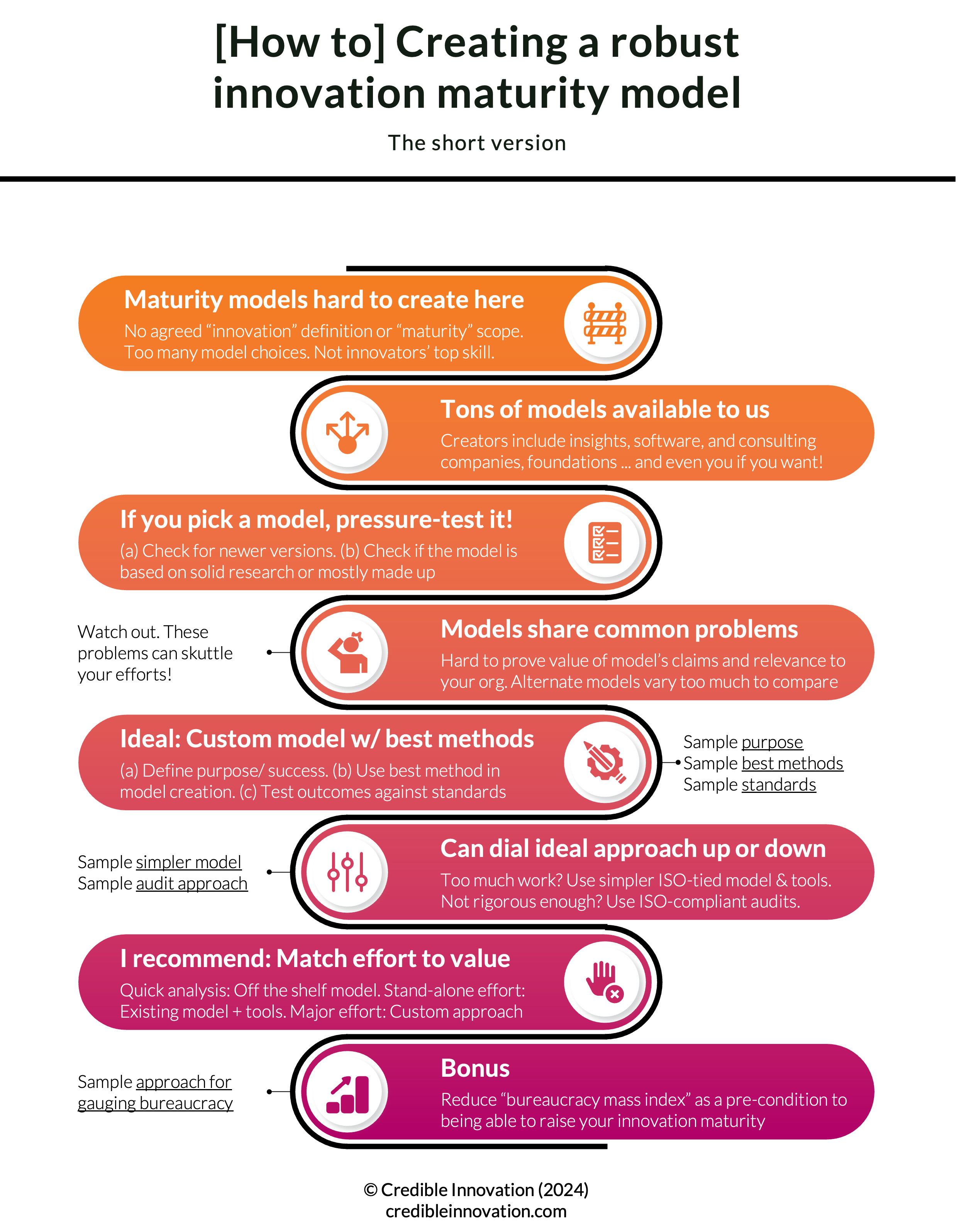
Footnotes
*If you really must know, I actually like three models, for whatever my opinion is worth on the matter.
The Gartner model a solid general-purpose tool using a very conventional (in a good way) structure that integrates nicely with many broader corporate capability models. In its actual application by Gartner (e.g., here), it also appears to have both solid summaries and actionable details to offer.
I also like the Wheel of Innovation. Compared to the Gartner model, it focuses more explicitly on the outcomes of innovation, rather than on its value chain. But I would customize it a bit, mainly to line up precisely with other models I use.
Finally, I like Innovation 360's ISO 56000 Readiness Assessment and would likely use it for a more limited assessment, where an all-out custom maturity model would be overkill. This assessment appears to combine the benefits of a simple, free assessment with digestible findings with the promise of being able to expand the model's sophistication at will, theoretically all the way to full ISO 56000 implementation. So you would know that early light efforts would not go to waste if you ever were to expand the work.
Key sources
Achi, A., Salinesi, C., & Viscusi, G. (2016). Information Systems for Innovation: A Comparative Analysis of Maturity Models’ Characteristics. In Lecture Notes in Business Information Processing: Advanced Information Systems Engineering Workshops (pp. 78-90). Springer International Publishing. https://doi.org/10.1007/978-3-319-39564-7_8
Karlsson, M. and Magnusson, M. (2019), The Systems Approach to Innovation Management, in Chen, J., Brem, A., Wong, P. K., & Viardot, E. (2019). The Routledge Companion to Innovation Management. Routledge. http://books.google.com/books?id=J8uXAQAACAAJ&hl=&source=gbs_api
Penker, M., Junermark, P., & Jacobson, S. (2017). How to Assess and Measure Business Innovation. https://books.google.com/books/about/How_to_Assess_and_Measure_Business_Innov.html?hl=&id=7PkOtAEACAAJ
Credits
Photo "Black Microscope" by Yassine Khalfalli on Unsplash


